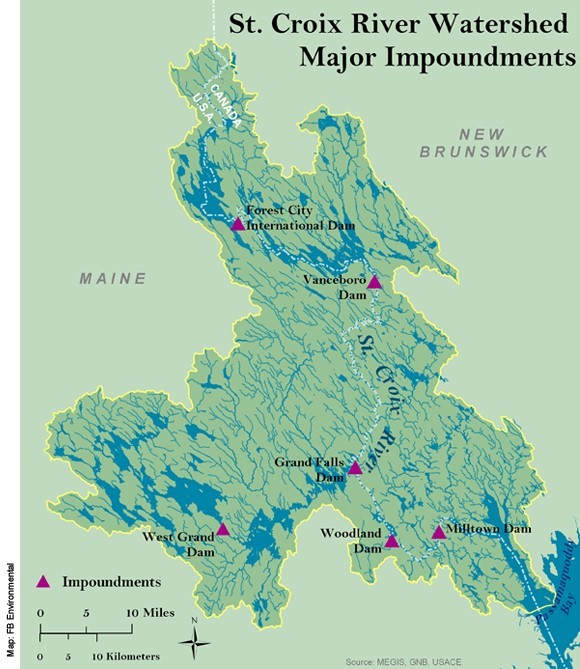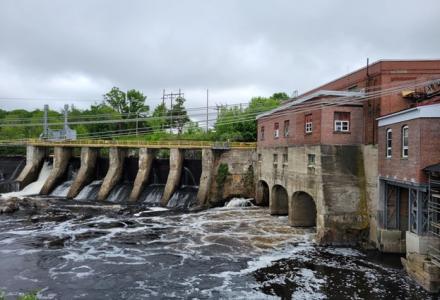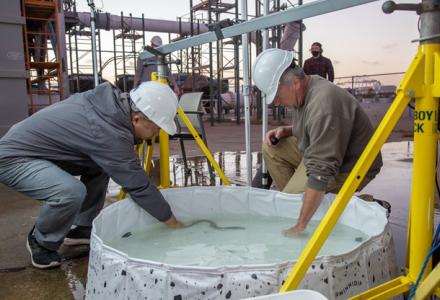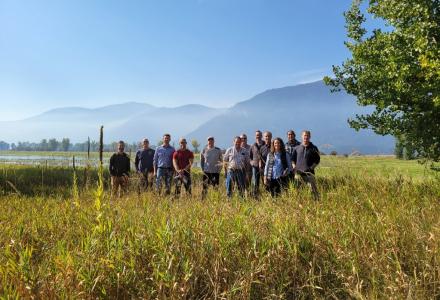
Improving aquatic connections along the St. Croix River for fish to migrate would be a boon to those populations and the ecosystem at large.
That’s according to Dr. Joseph Zydlewski, assistant unit leader of fisheries with the U.S. Geological Survey’s Maine Cooperative Fish and Wildlife Research Unit at the University of Maine in Orono. Zydlewski said he wants to see the St. Croix restored as much as possible to its natural, pre-dammed state. East coast freshwater systems are typically considered “nutrient poor” on their own, he said, so fish migrating in from the sea – such as alewives, shad, salmon and sea lamprey – provide an influx of nutrients as they die and are eaten. To help those inland water systems means understanding how migrating species work together with resident species.

Zydlewski spoke to the IJC’s International St. Croix River Watershed Board at a June 14 public meeting in Calais, Maine.
“Part of (my) perspective for restoring the system is trying to consider all the components, not cherry picking because we want to fish for salmon or smallmouth bass,” Zydlewski said. “It’s understanding how the whole group is working together.”

In his presentation, Zydlewski addressed the impact of passageways through dams on the St. Croix watershed, saying that these passages are not an “all or nothing” for fish. Rather, there are gradations of success, and a healthy ecosystem needs timely and effective fishways like ladders and weirs for all kinds of species. For example, the longest type of fishway on some of the St. Croix dams – the Denil type – is good for salmon, but poorly-suited to American shad and alewives.
IJC Commissioner Rich Moy said fish bypass structures over dams need to be designed not just to optimize the passage of fish upstream, but also to enable young fish to make it back downstream to the ocean. As such, Zydlewski’s presented study and associated activities are “worthy of consideration.”
Zydlewski said the issue has gotten entangled with US politics over the years. In 1995, the Maine legislature passed a law restricting the native alewives from getting into the St. Croix to spawn through the Grand Falls and Woodland dams. The law was passed due to what were ultimately unsubstantiated concerns that they were impacting the smallmouth bass fishery.
Disagreeing with Maine policy, in 2001 the Canadian Department of Fisheries and Oceans started trucking alewives from the Milltown fishway upstream past the Woodland flowage so they could spawn; the St. Croix is a joint waterway between Canada and the United States.
The Maine law was repealed in 2013 with a new law requiring unconstrained passage for alewives past the Grand Falls and Woodland dams.

Current debates on policy concerning the St. Croix could see impacts on the ecology of the waterway, too. U.S. Rep. Bruce Poliquin of Maine introduced legislation in June 2016 that would exempt the Woodland Pulp mill hydro system from Federal Energy Regulatory Commission licensing requirements issued in March, which include a call for fishways for eels at three water storage dams in Washington County. Poliquin has argued the projects could be regulated by Maine in a safe way, though opponents – including Zydlewski - are worried that it would undermine efforts to restore the migrant fish population.
The IJC has been advocating for local solutions to maintain a healthy, balanced river ecosystem in the St. Croix watershed.


Kevin Bunch is a writer-communications specialist at the IJC’s US Section office in Washington, D.C.




